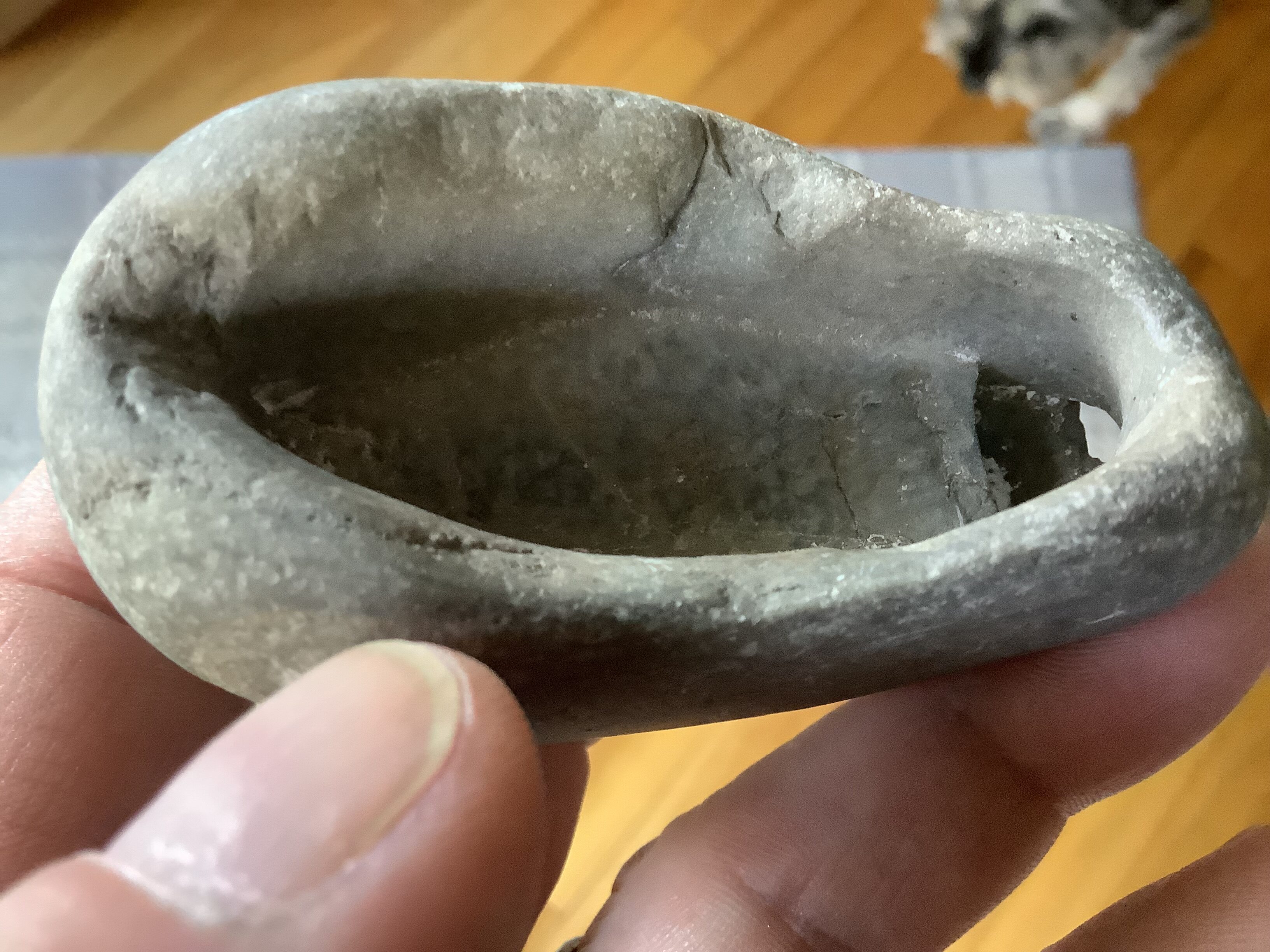It has been my experience that the majority of the academic archaeologists I have contacted in my area have proven to be extremely arrogant. They cannot fathom that a mere mortal may have found something they do not understand. Their immediate reaction to anything that does not fit their current paradigm has been to discredit it without actually looking at any of the evidence. They make these decisions based on their “opinions” and not any type of scientific methodology.
I am not saying all archaeologist are this way but the handful I have tried to deal with have been brutal..
I have tried to show many of the pieces in my collection to these regional and local “experts” and as soon as they hear what strata I am finding these tools in they refuse to even look at the collection or the site. A site that is literally less than 20 minutes from their office!
To be fair a couple of regional experts did give a small collection of mine a cursory glance but they didn’t even bother to remove any of them from the box..They then proceeded to tell me that, in their opinion, I have found nothing more than “random rocks”. An opinion based on nothing more than their highly questionable superior intellect and education.
I could write a book based on the ridiculous, unscientific and patronizing answers I have been told by these “experts”.
For example ” we have never seen that design before so it can’t be old”…
or “those scratches were caused by glaciers” When I asked how, their response was. ” Glacial magic”….
I asked another “expert” why I am finding similarly sized and shaped rocks made out of completely different geologic material. Their answer was “it gets really cold up here and strange things happen, WTF!
I don’t believe I am asking too much but I would love to have these experts, who are paid by our taxes, treat a fellow citizen with respect.
I would also like them to try and explain the following in a truly scientific manner.
The following are examples of “authenticated” tools that I have found displayed in Museums and private collections around the world. I am comparing them to pieces I have found at this small site in Alberta, Canada. How can mine be natural “random rocks” when their twin, found outside of North America, is considered an authentic lithic tool?
The image on the right is an “authenticated” Borer awl flake tool from Africa. The piece on the left from my collection is considered a “random rock” by the local “experts”
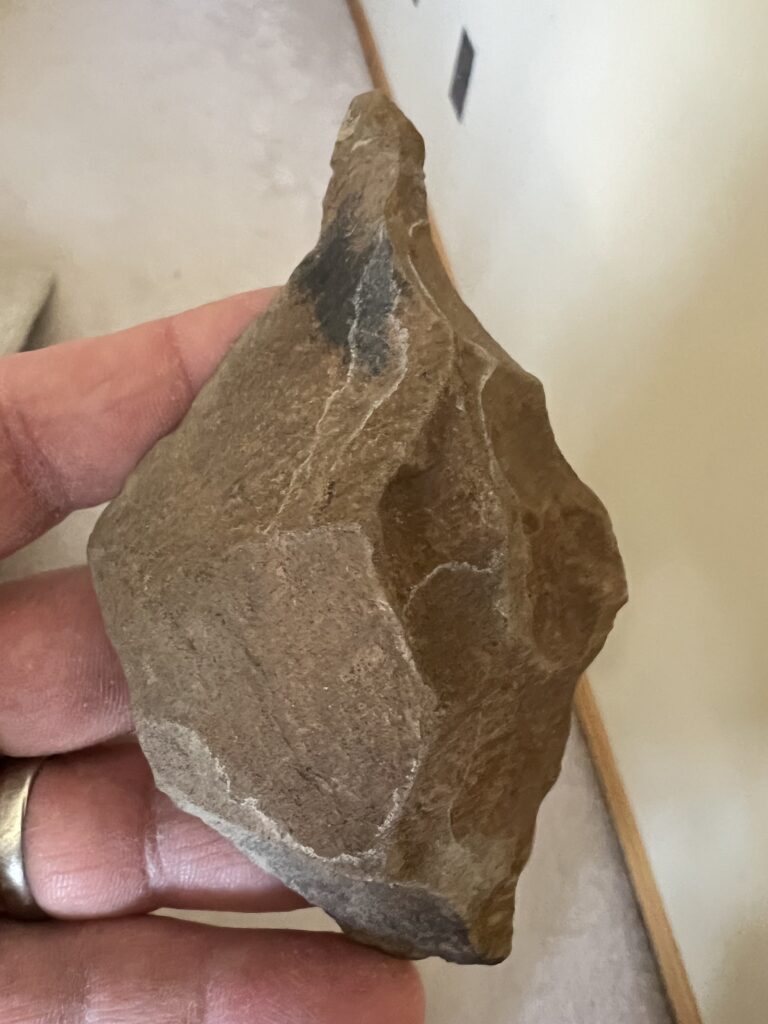
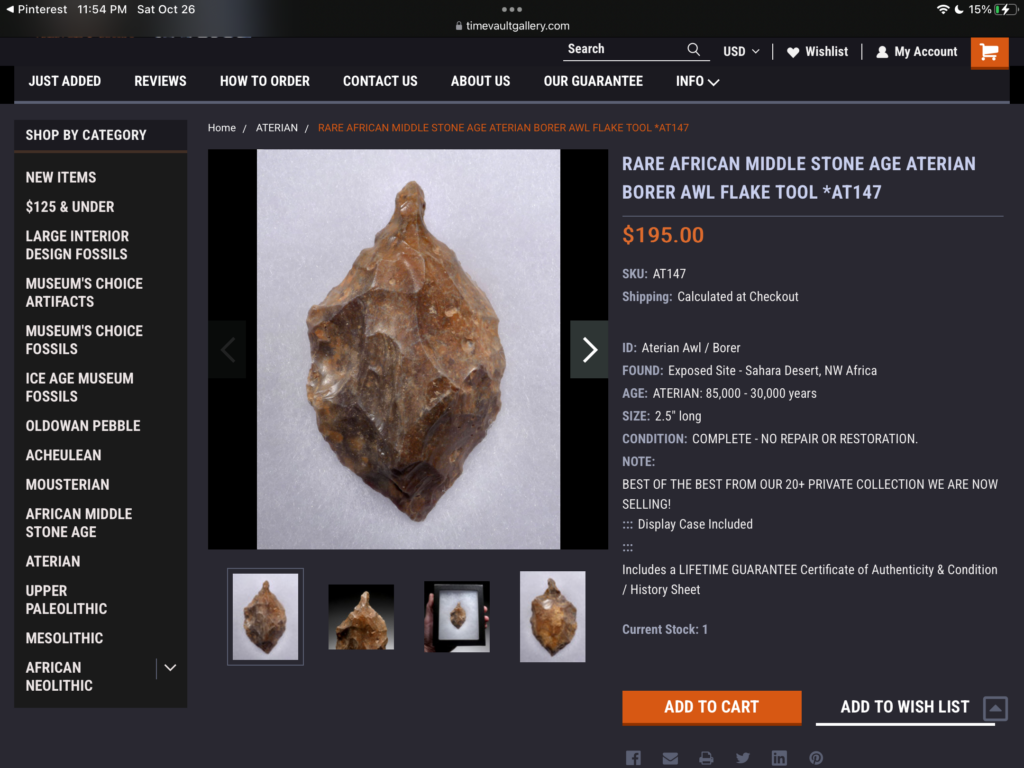
The same thing here. The convergent convex side scraper on the right is from France and on display at the Royal Ontario Museum. The piece on the left is another “random rock” from my collection. Both have a sharp convex groove running along the top edge and they both have the same colour orange residual stain in the same location.
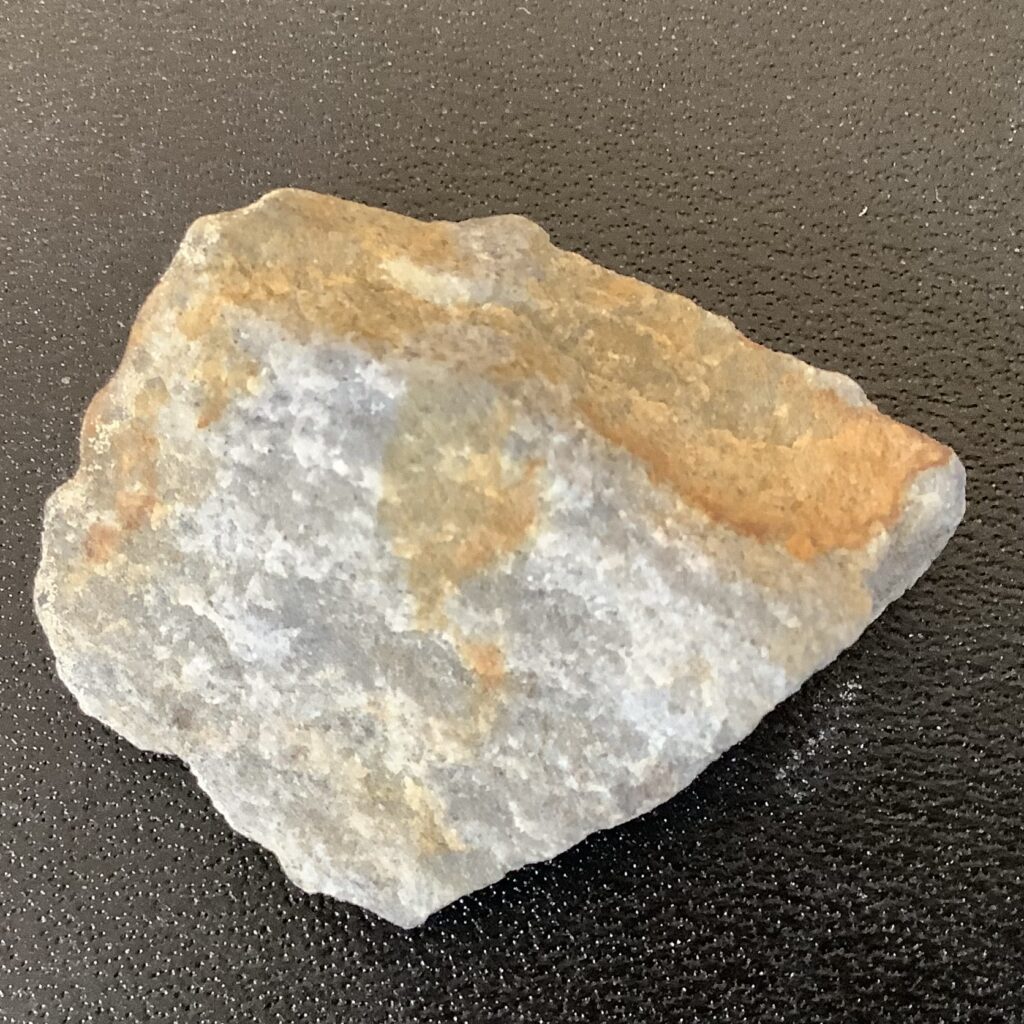
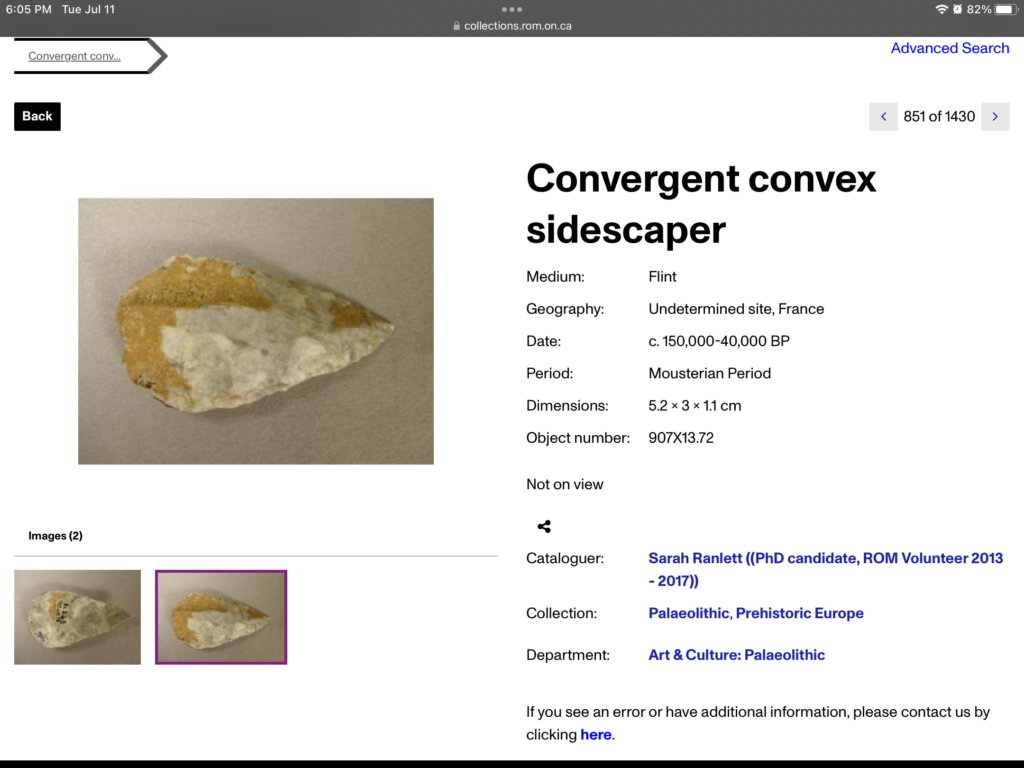
The “random rock” on the left below is from my collection. The “artifact” on the right I believe is from France.
Both have a highly polished area in the same location and only that location on what I would call the bottom.

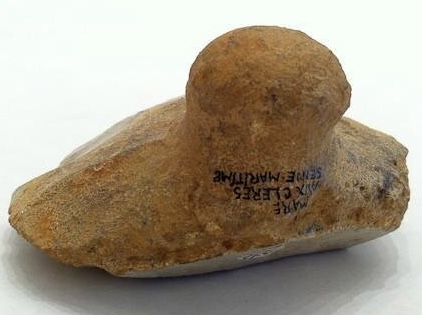
Another example:The piece one the left is a an “Authenticated” 360 degree scraper from Africa. The piece on the right is a “random rock”from my collection. Both are approximately the same size and shape and both have a scalloped edge that results from removing material in a systematic manner.
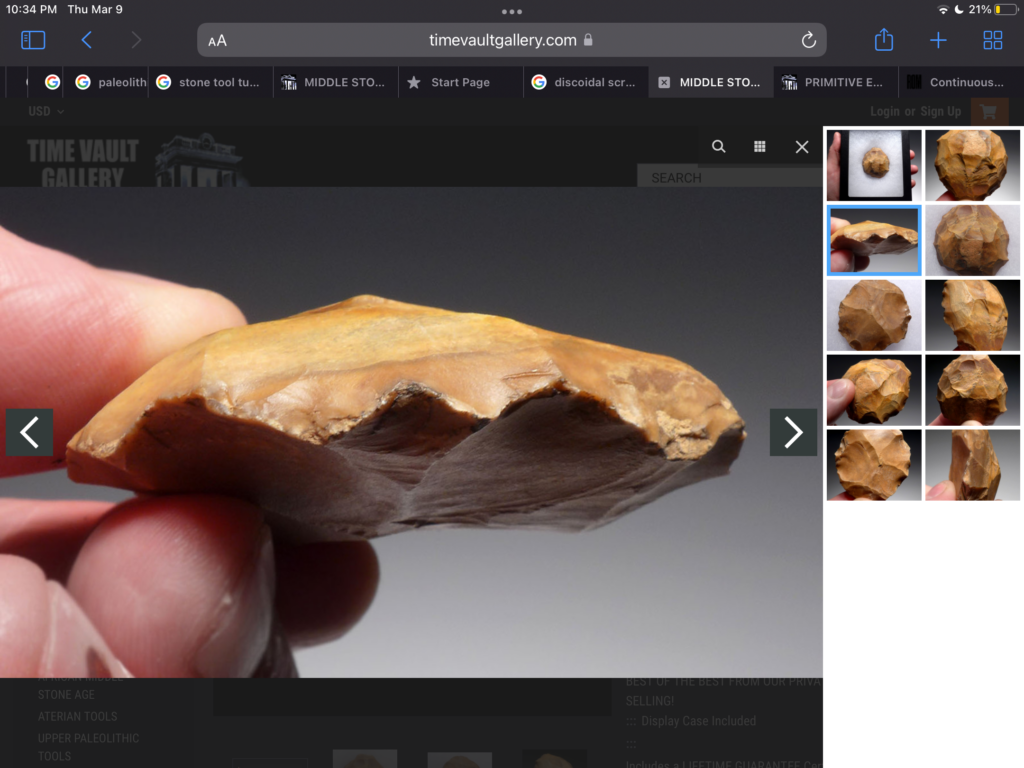
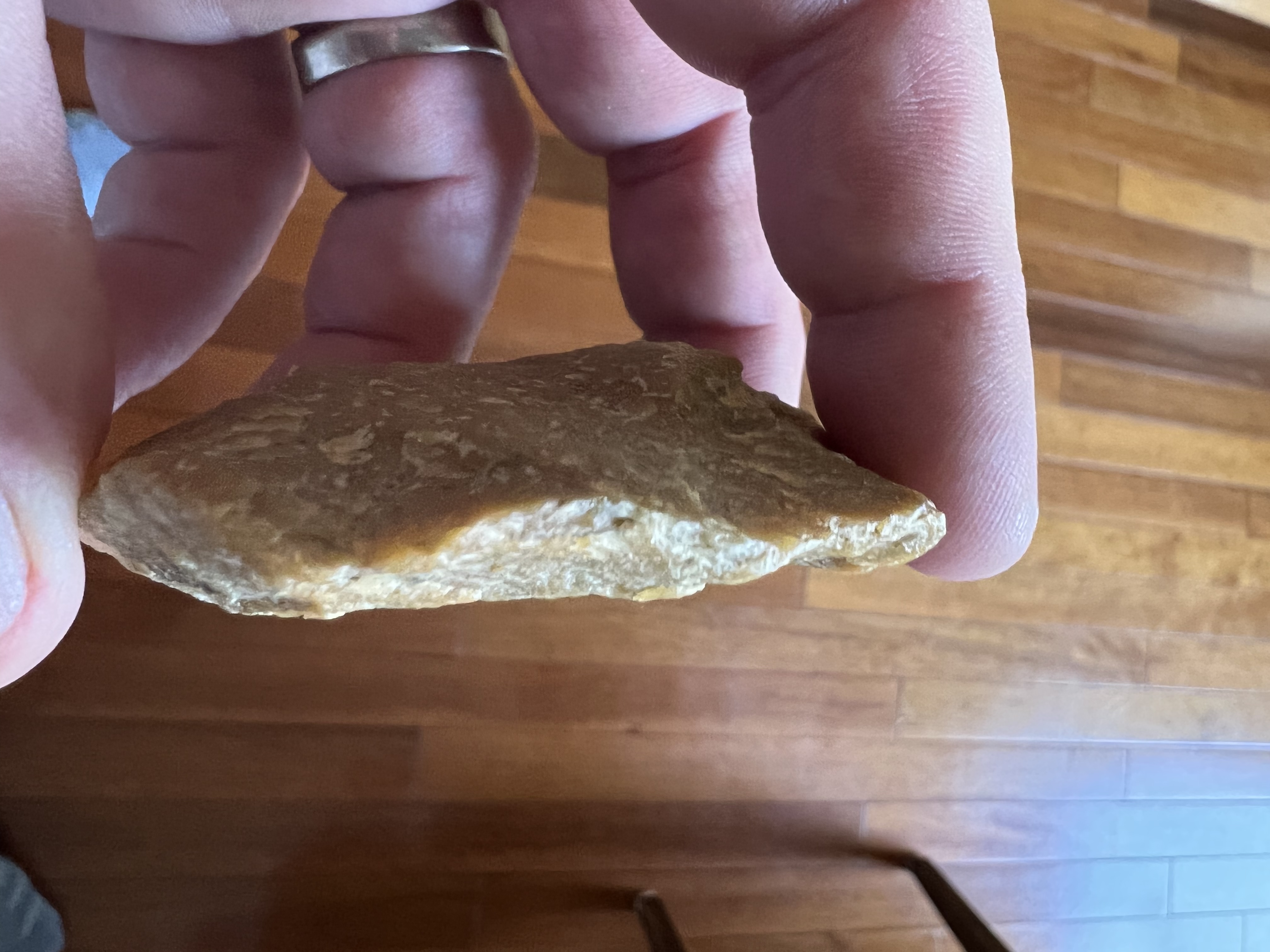
The authenticated abrader/grinding stone on the left is on display at the Smithsonian. The “random rocks” on the right are in my collection.

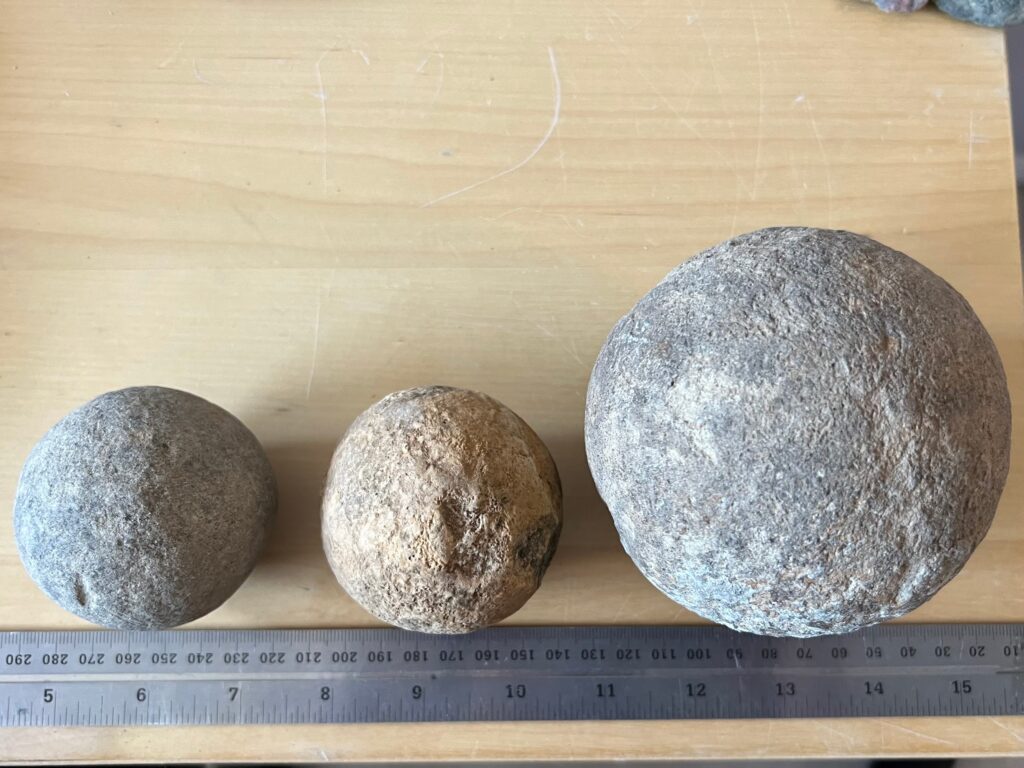
Another “authenticated” tool on display at the Smithsonian. “Random rocks” on the right.
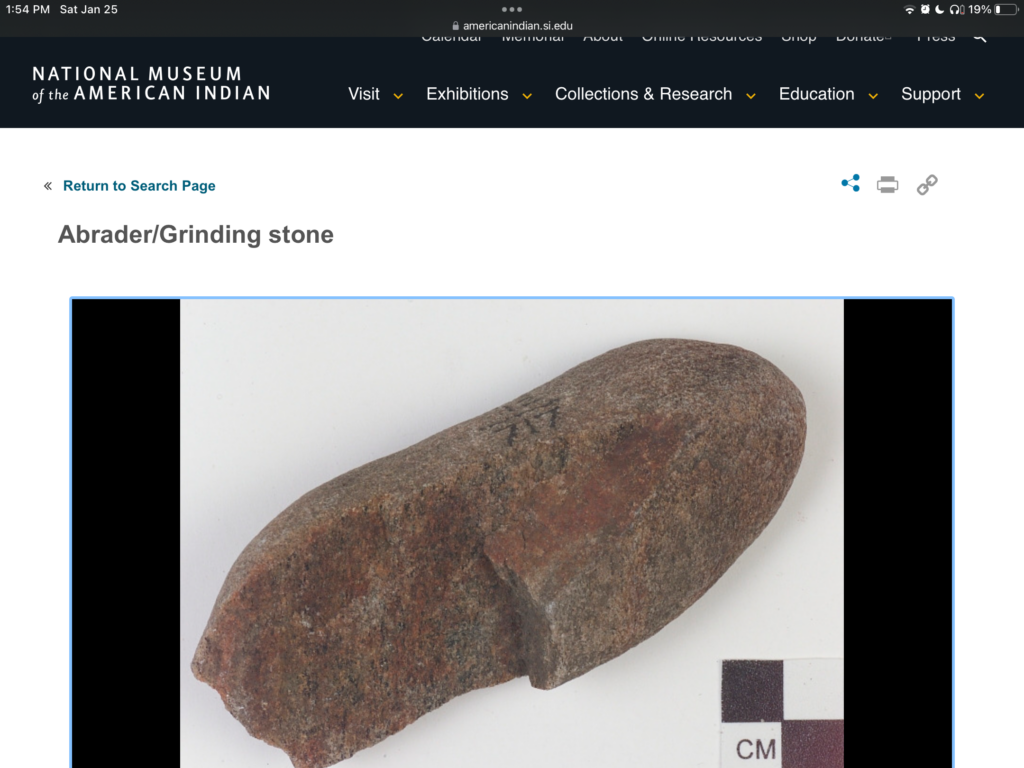
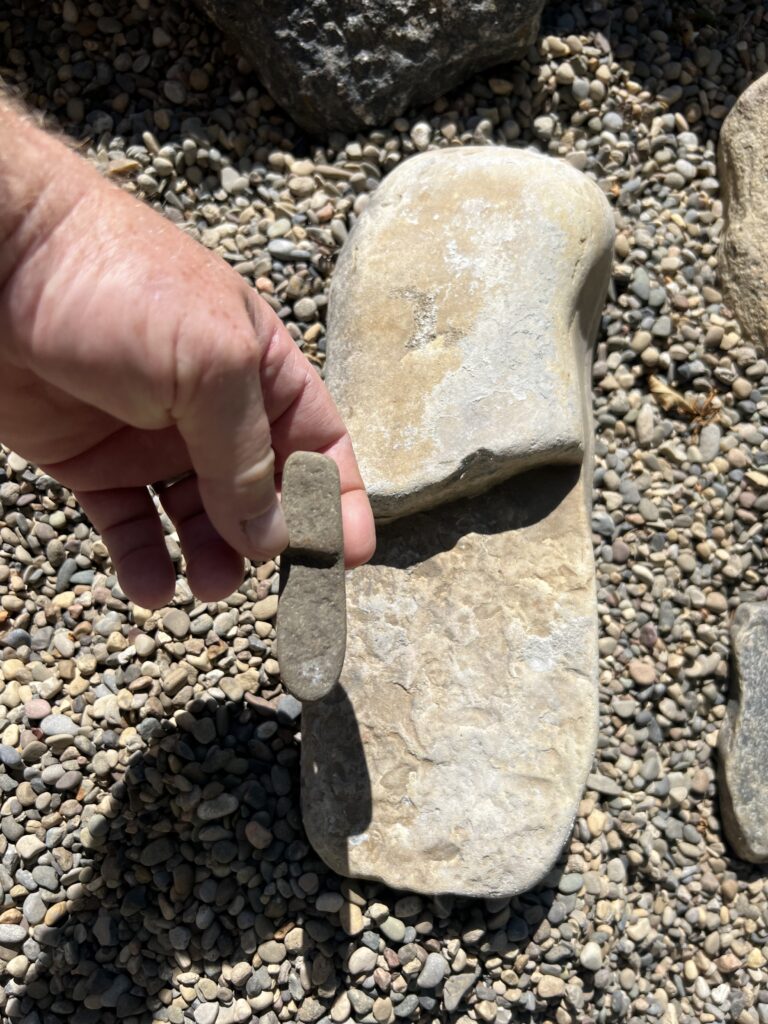
An “authenticated” basalt, Oldawan Pebble Chopper axe. The second image is a “random rock” from my collection. Both have a similar convex groove at the tip. both are similar in size and both have similar tool marks in the same locations.
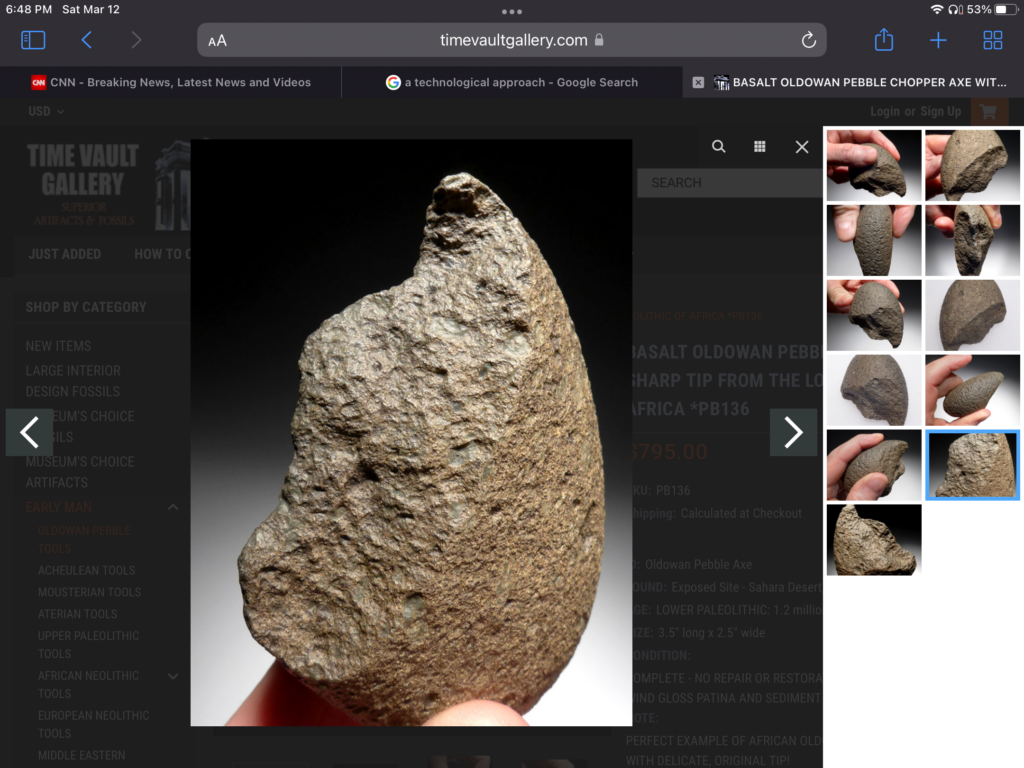
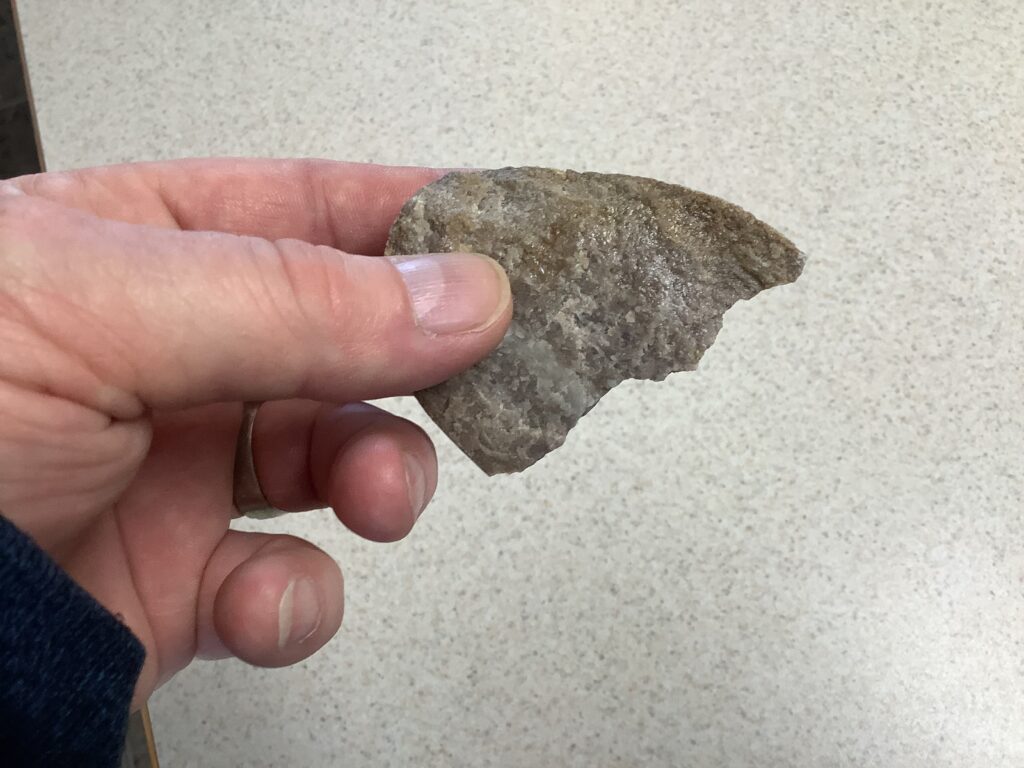
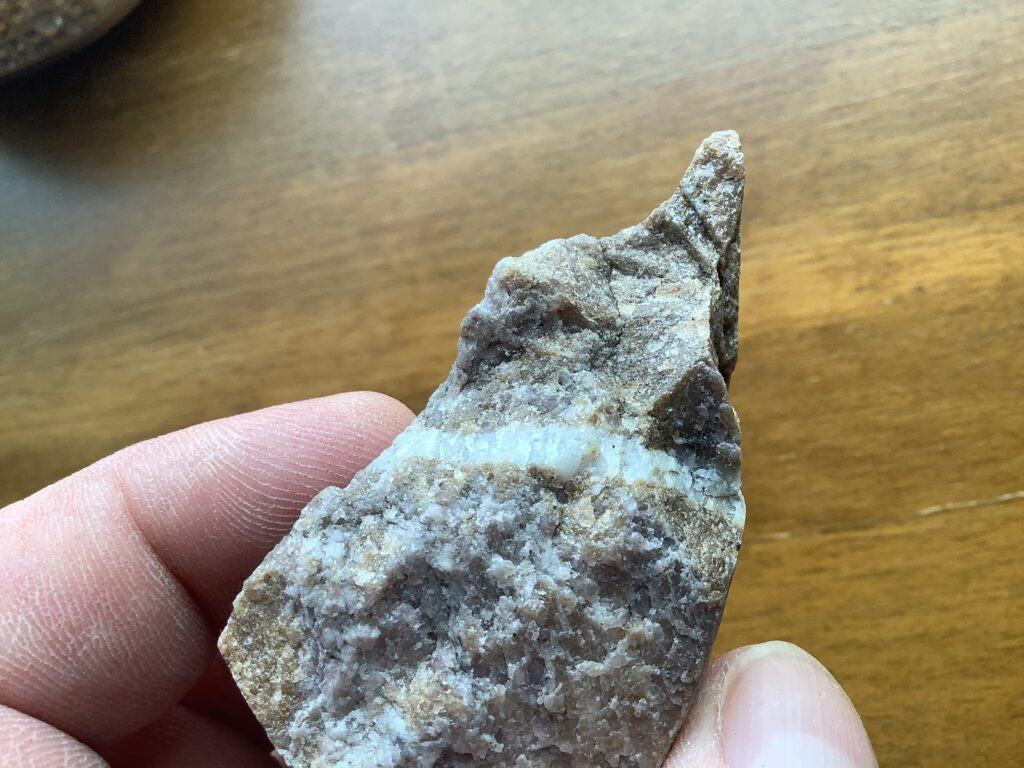
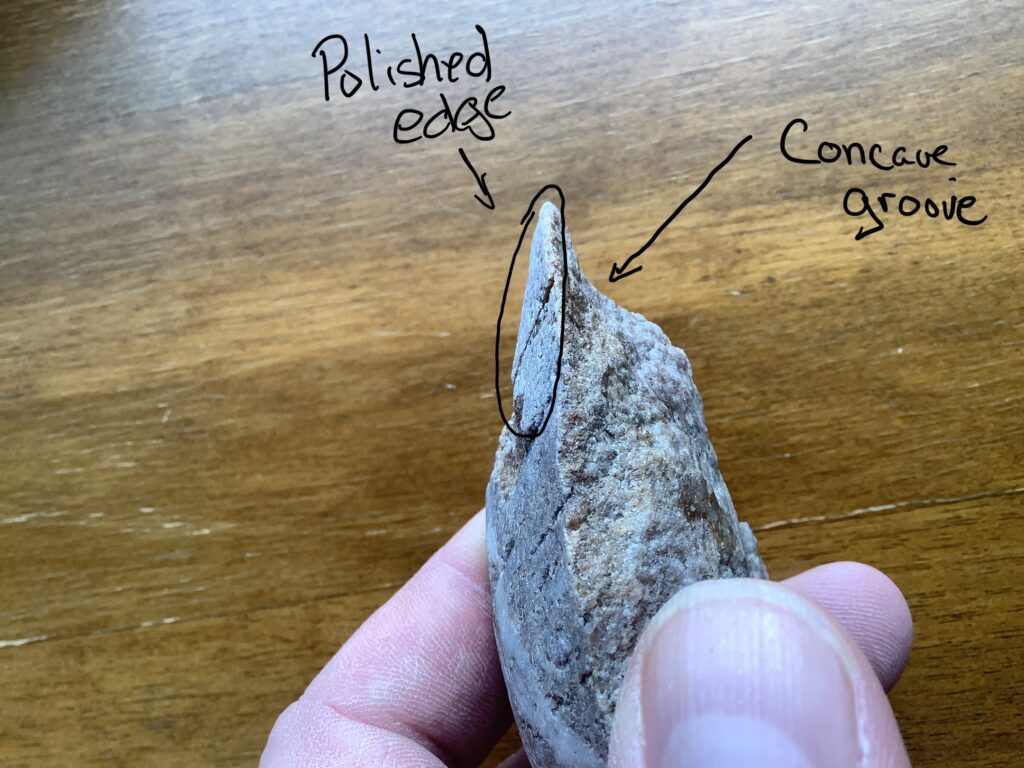
A “authenticated” single convex side scraper on display at the Royal Ontario Museum. Two “random” rocks” on the left are in my collection.
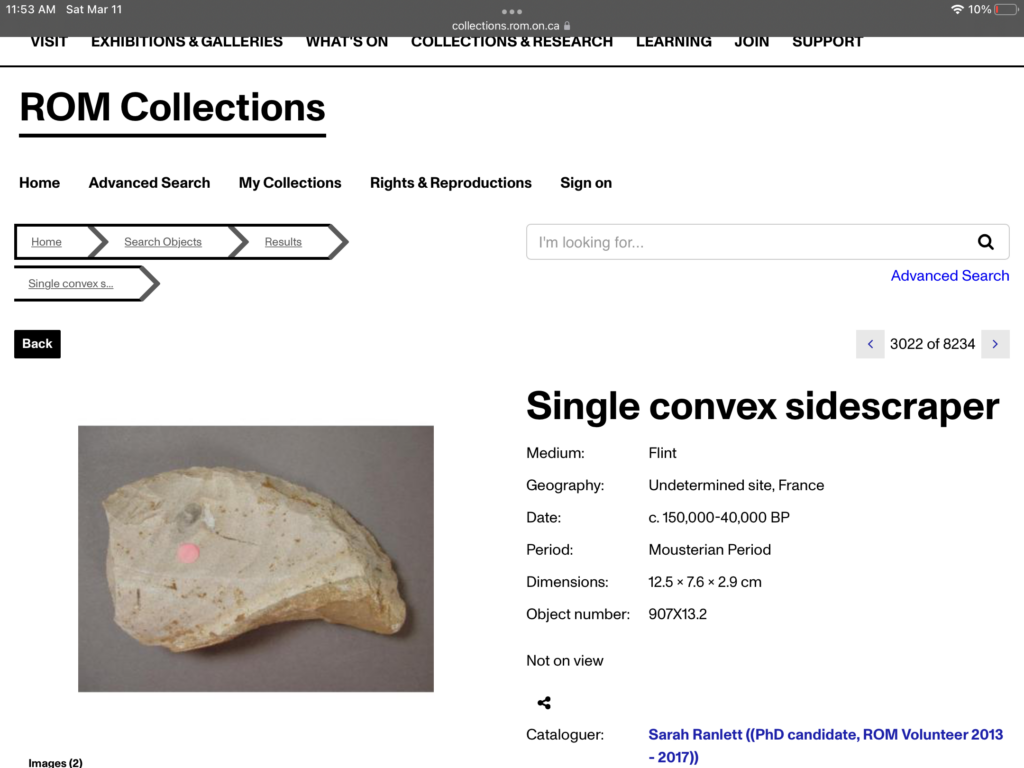
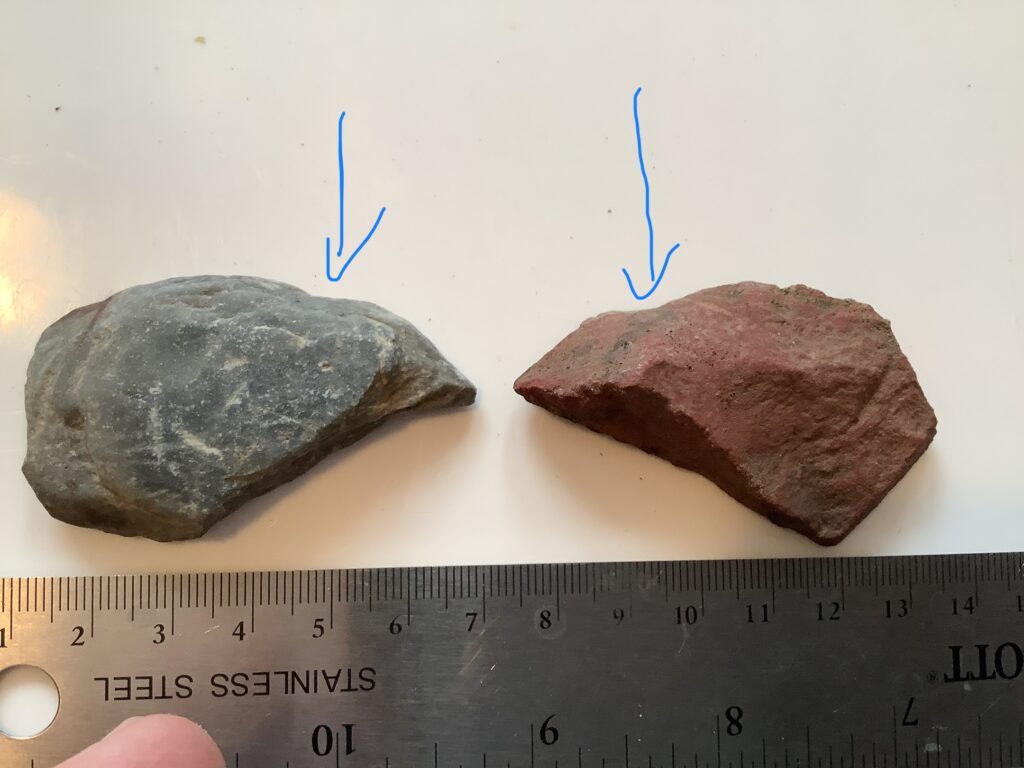
The piece on the right is on display in a private collection and was found in Ontario, Canada. The piece on the right is a “random rock” from my collection and found in Alberta, Canada which is about 3600km away..
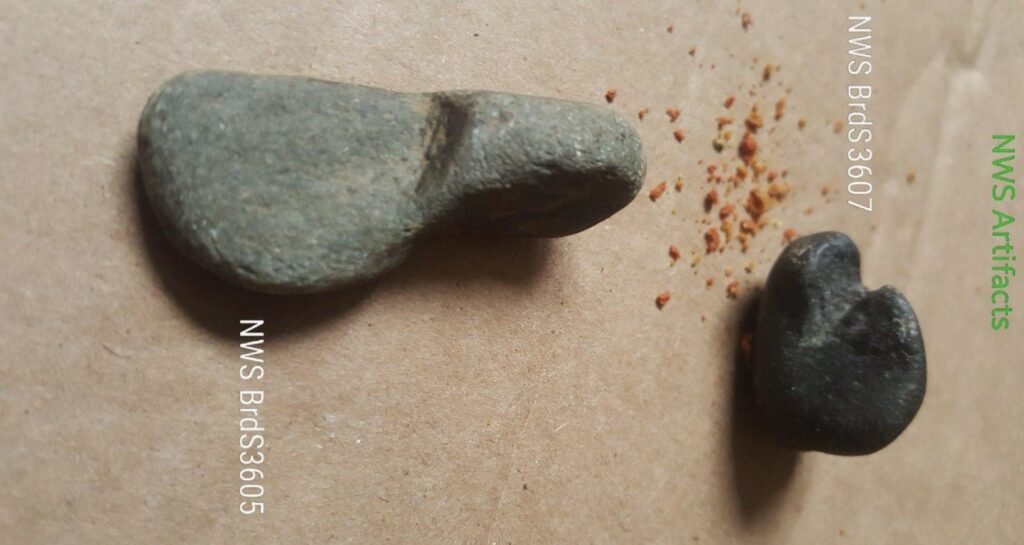
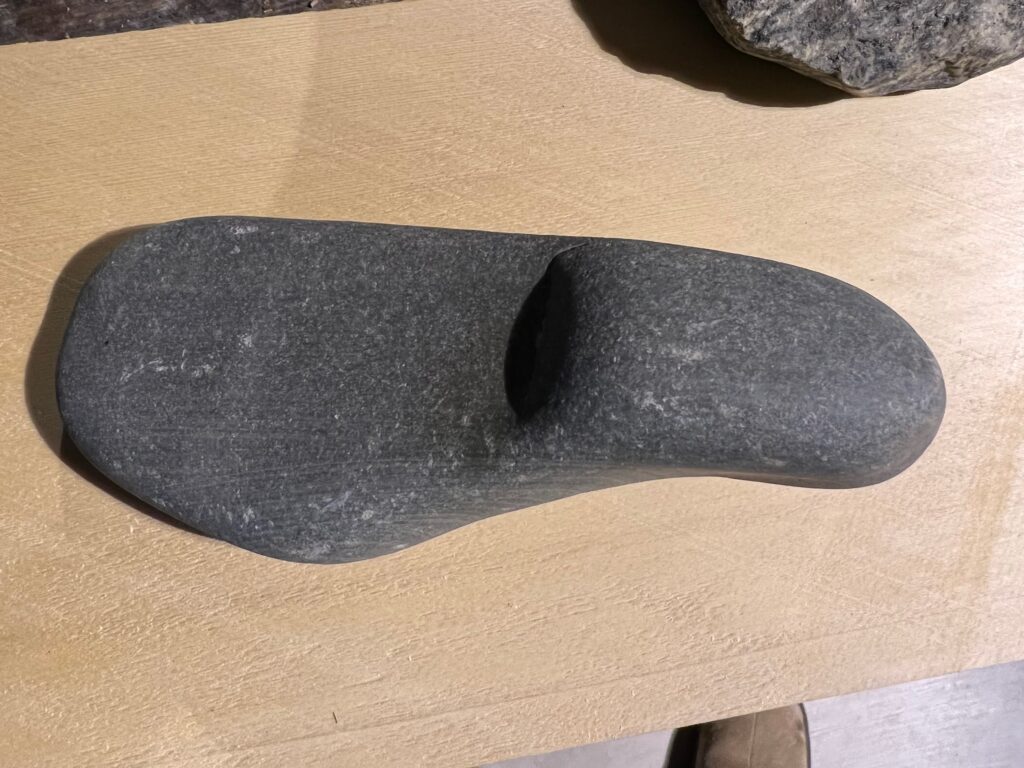
These are just a few examples I have dozens more. In fact. I can go online right now and within minutes I will find authenticated tools that are damn near copies of the “random rocks” I have in my collection.
I would truly love to hear some actual well thought out, scientifically based, answers as to what would cause this if not by our early ancestors.
Before you respond here are some points to consider.
The cobbles I find do not belong where I find them because of this they have been historically labelled glacial erratics.
The cobbles I find originated in all 360 degrees of direction.
The majority of the cobbles I find are geologically and geographically distinct with no parent material in the vicinity.
I find repeating groups of similarly sized, shaped and featured cobbles.
This would require that similarly sized, shaped and featured cobbles, each unique geologically and geographically were picked up individually by a glacier or glaciers, that to my knowledge didn’t exist, and then these chosen rocks were dropped of at the same geologic time. sorted into repeating groups of similarly sized, shaped and featured rocks.
Anyone who respond with “glacial magic” will be blocked!
